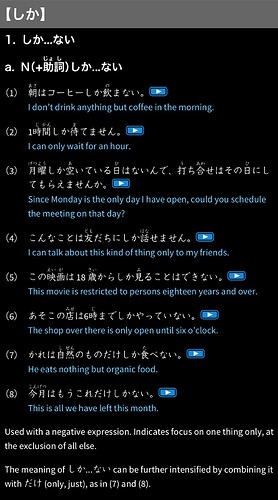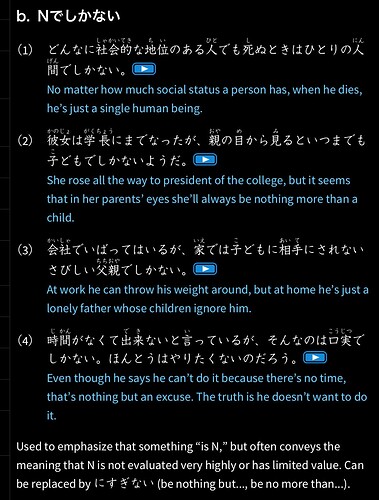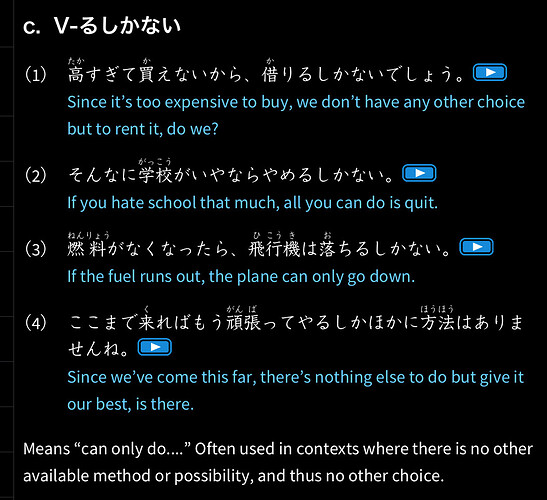What’s the difference between these two grammar points? They seem pretty similar.
N しか+Vない
There’s only, Nothing but
- 犯人はまだ3人しか捕まっていない。
Only 3 of the criminals have been caught so far.
—-
~としか+Vない
Can only be…, there is only one possibility that…
For example
- この事は不可能としか言えないよ。
Kono koto ha fukanou to shika ie nai yo.
I can only say that it is impossible.







